Former Yamajo Miyasaka Silk Mill (2)
In June, I wrote an article about the former Yamajo Miyasaka Silk Mill.
It’s one of the modern industrial heritage sites in Okaya City, Nagano Prefecture, but I wrote about feeling uneasy about the facility’s maintenance.
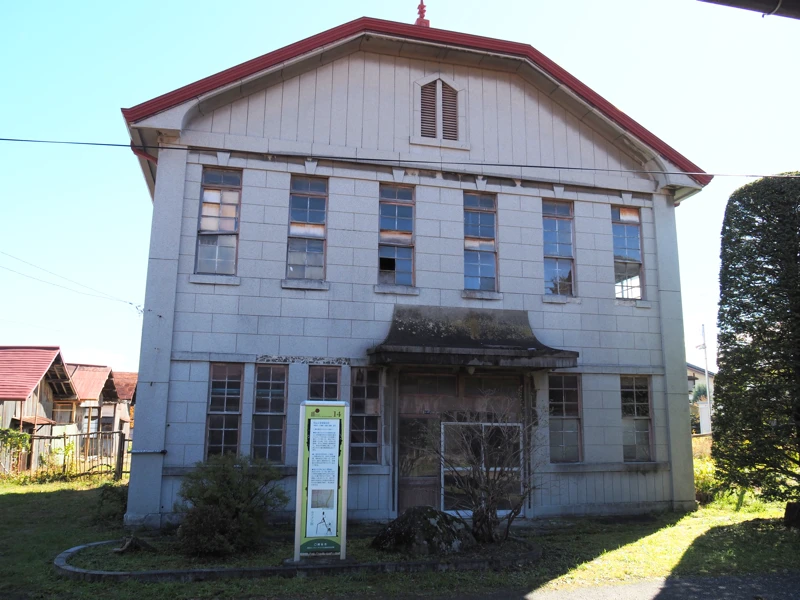
The other day (early November), I visited the former Yamagami-Miyasaka Silk Mill again.
This is a photo of the office building. Back in May, the trees in front of the entrance were so thick that the building was hard to see. Since then, they seem to have been pruned back, the trees have gotten smaller, and with the leaves fallen, the entrance is now visible.
Since the entrance faces north, it’s backlit on sunny days.
Some window panes are still missing, as before.

However, when I walked around to the east side of the office and looked at the old factory, it looked a little different from last time.
The fence preventing entry to the site was still there, as before, but the appearance of the building visible beyond it seemed altered.
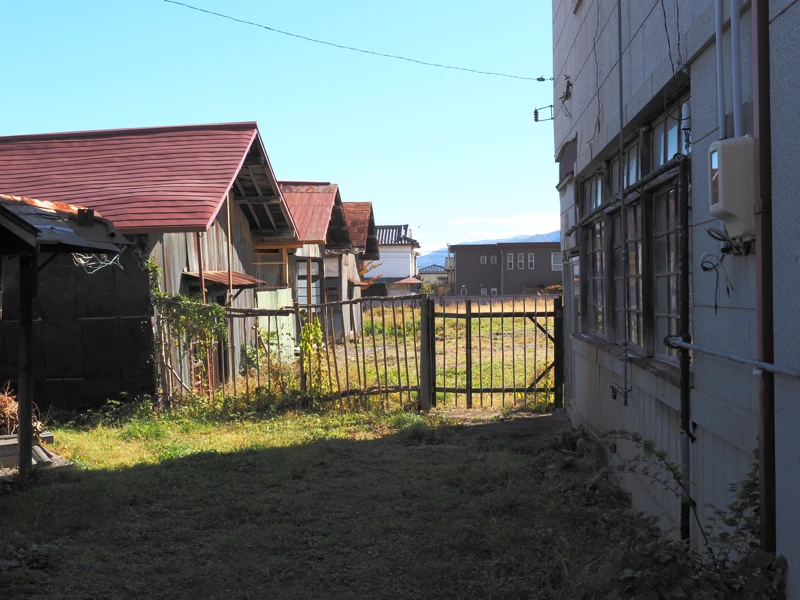
Of the three buildings in the photo, the central old factory building had been buried in trees and on the verge of collapse last time, but it had been partially repaired.
It appears to be a temporary fix rather than a proper repair, but the slanted roof has been fixed.
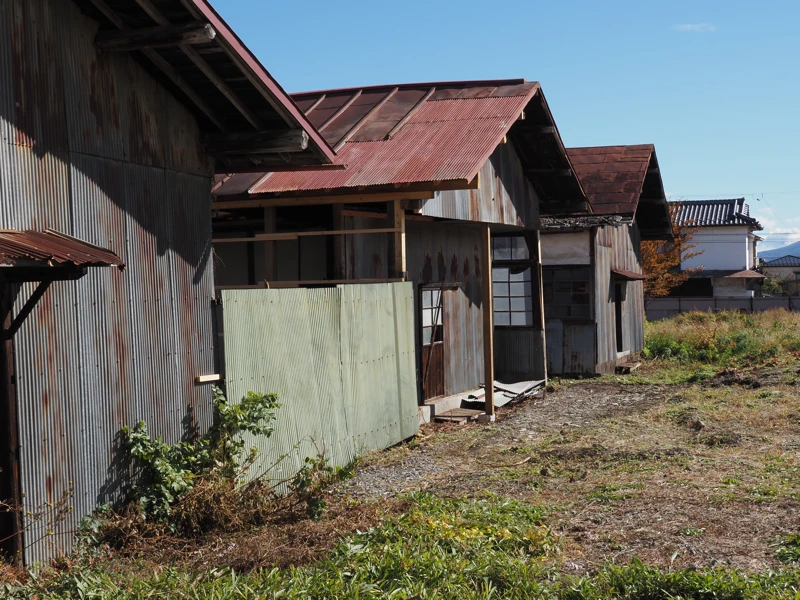
Let’s compare it to the photo taken in May. This one was shot from the road on the west side.
(I wrote the previous article in June, but I actually visited in May.)
Looking at this photo, the roof was already damaged in May, but it seems they fixed the slant and repaired it by installing corrugated sheets.
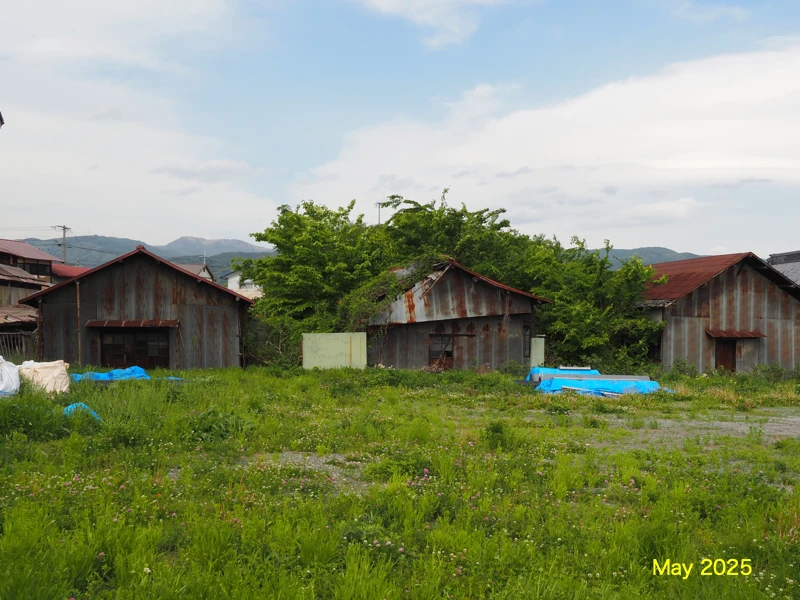
I couldn’t get the exact same angle for the photo, but here’s the one taken this time, also from the west side.
The overgrown trees have been removed, and the slanted roof has been fixed.
Does this mean they’ve started renovation work with the aim of preserving it?
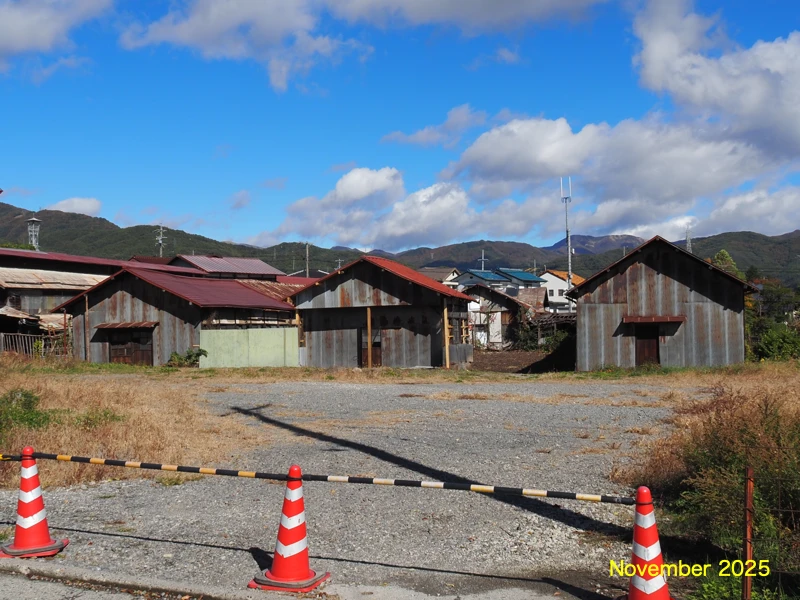
I zoomed in on the center part of the photo above.
This photo is too small to tell, but looking at the larger image, it seems a new pillar has been added to the front pillar and secured with bolts. New square timbers are visible around the window frame. This likely serves to reinforce the wall and correct any distortion.
The ground in the back, which seemed overgrown with trees, has been leveled and cleared.
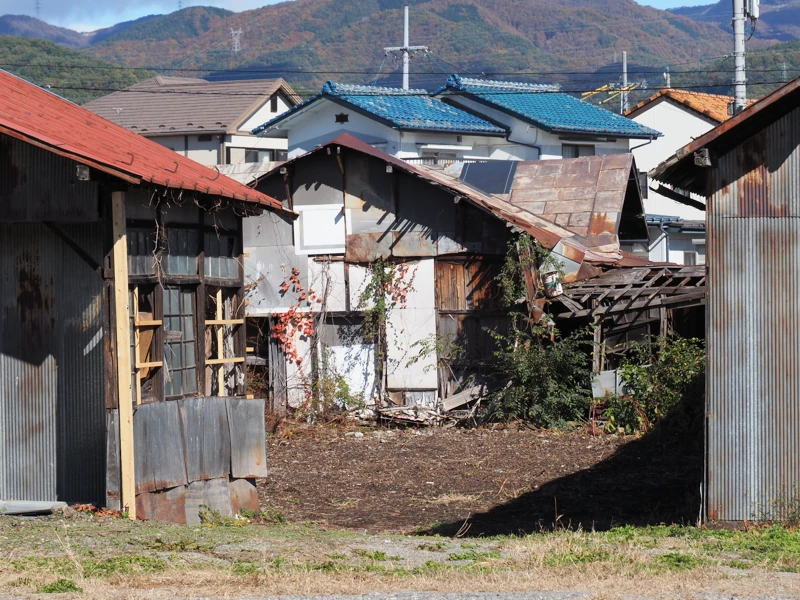
Based on my previous impression, I had imagined this building would be demolished, so I’m a bit surprised they preserved and repaired it instead. I don’t know who the owner is (perhaps someone connected to the founder?), but it seems they have a desire to preserve it.
Given the condition of this factory building, it seems unlikely the old materials alone will hold up, so I imagine they’ll need to add or replace new components. But how exactly do they plan to preserve it?
I’ve only seen the site myself, so I don’t know the future outlook, but I want to support their stance on trying to preserve it.
Walking around the perimeter, I viewed the southernmost factory building from the southeast. The roof was damaged and warped, with the eaves at the far end crumbling. The corrugated sheets on the walls were likely added for protection. Will this building also undergo repairs in the future?
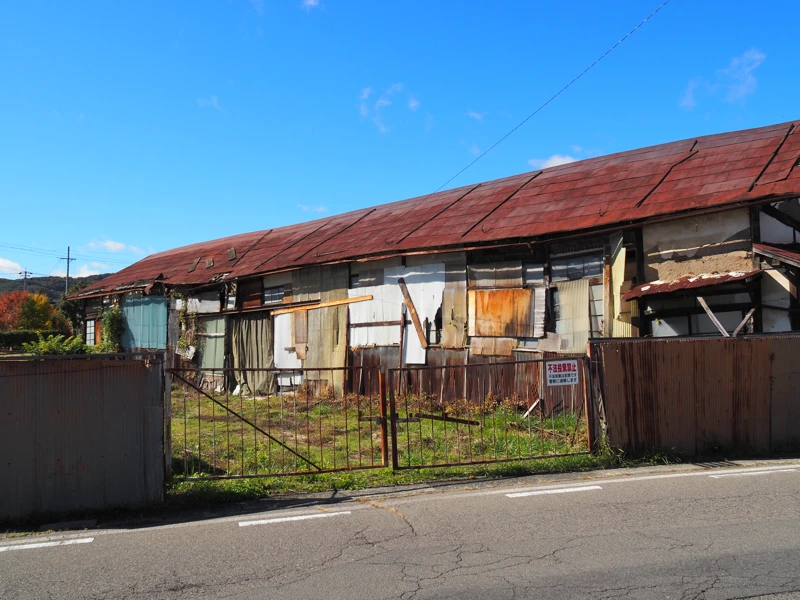
Even if unused facilities are repaired for preservation, they often end up neglected because they remain unused. The real challenge is how to utilize preserved structures. While the office building might be manageable, the state of this factory site seems difficult.
However, if Okaya City is promoting it as a modern heritage site, I realize the effort and cost would be significant, but at the very least, someone needs to maintain it.
Personally, I’d be delighted if the building could be opened for tours during events or similar occasions.
[Related article]
"Former Yamajo Miyasaka Silk Mill“ (2025-06-28)
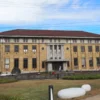

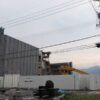
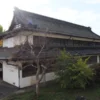



Discussion
New Comments
No comments yet. Be the first one!